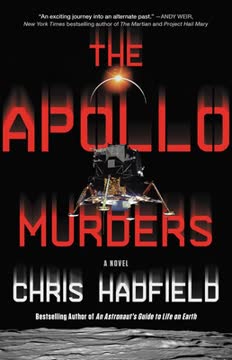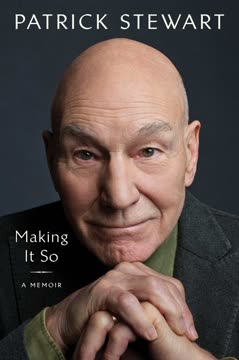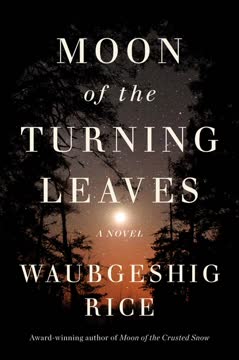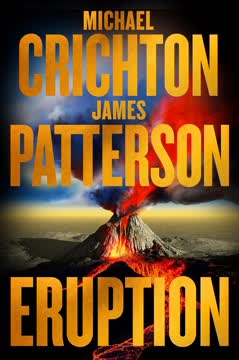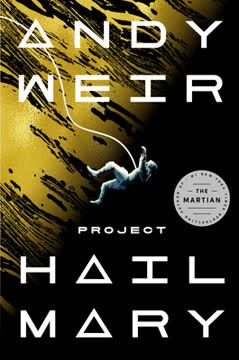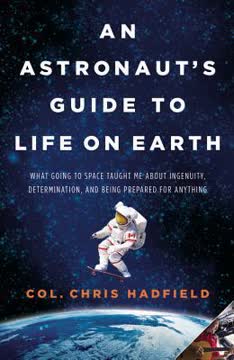Plot Summary
One-Eyed Pilot's Return
After losing his eye in a jet accident, Kaz Zemeckis, a former astronaut candidate, is summoned to Houston as a military liaison for Apollo 18, a secretive, all-military mission. The US government, under Nixon, has revived the canceled Apollo 18 as a covert operation, blending Cold War politics, military objectives, and the last gasp of the space race. Kaz's unique background in intelligence and spaceflight makes him the perfect observer and fixer, but he's haunted by his lost dreams and the shadowy motives behind the mission.
Secret Military Apollo Mission
The crew—Tom Hoffman, Luke Hemming, and Michael Esdale—are all military test pilots, with backup Chad Miller. The mission's public face is scientific, but its real goal is to intercept and disable the Soviet Almaz spy station before it becomes operational. The crew trains under intense secrecy, with Kaz acting as the bridge between NASA, the military, and intelligence agencies. The mission's stakes are raised by the presence of a Soviet lunar rover, Lunokhod, in a suspicious location on the Moon.
Cold War Shadows Gather
In Moscow, KGB agent Vitaly Kalugin activates long-laid plans, leveraging a sleeper agent in the US space program. Meanwhile, the Soviets push their own lunar and orbital ambitions, with the enigmatic Vladimir Chelomei overseeing Almaz and Lunokhod. The US intelligence community, led by hard-nosed figures like Schlesinger and Sam Phillips, is determined to maintain technological superiority, even if it means crossing ethical lines. The stage is set for a deadly game of chess in space.
Soviet Moon Rover Lands
In Crimea, Gabdul Latypov and his team land Lunokhod in the Sea of Serenity, near a geologically intriguing site. The rover's instruments detect unexpected radioactivity, suggesting the presence of valuable resources or something more sinister. The Soviets' secrecy and the rover's odd landing site raise alarms in Washington, fueling suspicions that the USSR is after more than lunar rocks.
Espionage and Sabotage
As the Apollo 18 crew trains, a fatal helicopter crash kills Commander Tom Hoffman. Investigation reveals sabotage—a loosened nut, likely deliberate. Suspicion falls on those with access, including backup Chad Miller. The accident shakes the team, but the mission presses on, with Chad promoted to commander. The shadow of betrayal and the possibility of a mole within the program add tension to the already fraught atmosphere.
Crew Assembles, Tensions Rise
The new crew—Chad, Luke, and Michael—struggle to gel under the pressure of secrecy, political interference, and personal loss. Kaz navigates the complex web of military, scientific, and intelligence interests, while developing a tentative romance with lunar geologist Laura Woodsworth. The cosmonaut program, meanwhile, prepares its own surprises, including a female cosmonaut, Svetlana Gromova, trained for high-risk missions.
Science, Spies, and Motives
The Apollo 18 landing site is shifted to investigate the Soviet rover's activities. Lunar scientists brief Kaz on the Moon's geology, the significance of KREEP (potassium, rare earth elements, phosphorus), and the discovery of mysterious "holes"—potential lava tubes or something more. The mission's scientific and military goals become inseparable, as both sides race to uncover and control lunar secrets.
Launch: Race to Almaz
The Saturn V lifts off, watched by both American and Soviet eyes. The crew's trajectory is altered to intercept Almaz, raising Soviet suspicions. In orbit, the crew prepares for a high-stakes rendezvous, while communications glitches—caused by a manufacturing flaw—threaten to isolate them. The Soviets, realizing their station is a target, arm Almaz with a space cannon and prepare for confrontation.
Deadly Encounter in Orbit
As Apollo 18 approaches Almaz, Luke performs a spacewalk to photograph and disable the station. Unexpectedly, Almaz is manned—two cosmonauts confront Luke outside the station. A struggle ensues, and Chelomei, watching from Moscow, orders the Almaz cannon fired. The gun malfunctions, killing a cosmonaut and fatally damaging the station. Luke is killed by a stray bullet; the Apollo crew barely escapes, and a surviving cosmonaut, Svetlana, clings to the Apollo ship.
A Cosmonaut Joins Apollo
Svetlana is brought aboard Apollo, creating a volatile alliance. With Luke dead, the mission's future is uncertain. Political leaders on both sides scramble to spin the disaster: the US sees an opportunity for propaganda and leverage, while the Soviets hope to salvage prestige by having the first woman on the Moon. The two sides agree—Apollo 18 will land, with Chad and Svetlana as the new lunar crew.
Death and Deception
As the crew prepares for lunar descent, hidden agendas multiply. Chad, secretly of Russian origin and possibly the KGB's sleeper, is manipulated by both sides—his brother, a Russian Orthodox monk, is used as leverage. Svetlana, armed and wary, is ordered to retrieve a specific radioactive stone found by Lunokhod. Kaz and Mission Control struggle to keep the mission on track, unaware of the full extent of the double-crosses at play.
Lunar Descent, Hidden Agendas
Chad and Svetlana land near Lunokhod, with Michael orbiting above. The moonwalk is a tense dance of cooperation and suspicion. Chad, under orders from both sides, disables Lunokhod and retrieves the Soviet stone, while Svetlana tries to thwart him. The burial of Luke's body in a lunar pit becomes a symbolic act, watched by the world. The moonwalk is marked by near-violence, sabotage, and the ever-present threat of betrayal.
Moonwalkers and Moon Graves
The joint US-Soviet moonwalk is broadcast as a triumph of cooperation, but beneath the surface, it's a battlefield. Chad and Svetlana clash over the mission's true objectives, culminating in a violent confrontation. The burial of Luke and the retrieval of the radioactive stone are overshadowed by mutual distrust. Both astronauts are forced to rely on each other for survival, even as they plot against one another.
The Soviet Stone
The stone, highly radioactive, is the real reason for the Soviet lunar mission. Its potential as a power source could shift the balance of power on Earth and in space. Both sides are desperate to claim it. As the crew prepares to leave the Moon, Chad hides the stone, planning to deliver it to the highest bidder—or keep it for himself. Svetlana, realizing its importance, is determined to recover it for the USSR.
Betrayal and Survival
The journey home is a tense standoff. Chad, wounded and increasingly unstable, is confronted by Svetlana, who is armed and desperate. The Soviets, tracking the capsule, dispatch a submarine to intercept the crew at splashdown. In a chaotic underwater struggle, Chad is mortally wounded, the stone changes hands, and Kaz, injured but resourceful, intervenes. Svetlana escapes with the Soviets, while Michael and Kaz are rescued by the US Navy.
The Final Descent
As the dust settles, the extent of Chad's duplicity and the depth of the espionage are revealed. The US recovers the stone, but the cost is high—lives lost, secrets exposed, and trust shattered. The Soviets claim a propaganda victory with Svetlana's return, while the Americans quietly celebrate their own success. The fate of the stone—and the future of lunar exploration—remains uncertain, as both sides prepare for the next phase of the Cold War in space.
Splashdown and Standoff
The Apollo capsule's off-course, ballistic re-entry leads to a dramatic standoff at sea. Soviet and American forces race to recover the crew and the stone. Underwater violence, gunfire, and last-minute heroics determine the outcome. In the end, the Americans secure the stone, but the Soviets extract their cosmonaut. The world sees a carefully managed narrative of cooperation, masking the deadly reality beneath.
Aftermath: Truths and Legacies
Funerals are held, medals awarded, and the official story is crafted. The true nature of the mission—the sabotage, the espionage, the battle in space, and the radioactive prize—is buried beneath layers of propaganda. Kaz and Laura look to the future, as the discovery of lunar radioactivity promises a new era of competition. The Cold War in space is far from over, and the lessons of Apollo 18 will shape the next generation of explorers and spies.
Characters
Kaz Zemeckis
Kaz is a one-eyed former test pilot and astronaut candidate, sidelined by injury but indispensable for his intelligence and experience. He serves as the bridge between NASA, the military, and the intelligence community, navigating the treacherous waters of Cold War politics. Kaz is deeply introspective, carrying the scars of lost dreams and the burden of responsibility. His relationships—with the crew, with Laura, and with the shadowy figures in Washington—are marked by loyalty, skepticism, and a relentless drive to do what's right, even when the lines blur.
Chad Miller
Chad is the backup-turned-commander of Apollo 18, a skilled pilot with a hidden past. Adopted from Russia, he is the unwitting (or perhaps willing) pawn in a decades-old KGB plot, manipulated through his brother and his own ambition. Chad's psychological complexity—his need for control, his resentment, and his capacity for violence—make him both a hero and a threat. His actions drive much of the novel's tension, culminating in betrayal, violence, and a desperate bid for legacy.
Svetlana Gromova
Svetlana is a test pilot and the USSR's secret weapon—a woman trained for the most dangerous missions. Thrust into the Apollo crew after the Almaz disaster, she is both ally and adversary, driven by patriotism, survival, and her own ambitions. Her presence forces the Americans to confront their own prejudices and vulnerabilities. Svetlana's psychological resilience, adaptability, and willingness to use violence make her a formidable player in the lunar drama.
Michael Esdale
Michael is the first Black astronaut to orbit the Moon, a Navy test pilot and scientist. He is the moral center of the crew, balancing technical expertise with empathy and calm under pressure. Michael's journey is one of proving himself in a world stacked against him, and his survival is a testament to his skill and integrity. His relationships with Chad and Svetlana are marked by trust, suspicion, and the shared trauma of space.
Luke Hemming
Luke is a Marine test pilot, chosen for his competence and reliability. His death during the Almaz encounter is a turning point, exposing the mission's dangers and the fragility of trust. Luke's absence haunts the crew, and his burial on the Moon becomes a symbol of sacrifice and the costs of the Cold War.
Laura Woodsworth
Laura is the scientific heart of the mission, driven by curiosity and a desire to break barriers as a woman in a male-dominated field. Her relationship with Kaz provides emotional grounding, and her expertise shapes the mission's scientific objectives. Laura represents the hope for a future where exploration transcends politics.
Vladimir Chelomei
Chelomei is the mastermind behind Almaz and Lunokhod, a man driven by ambition, paranoia, and a deep sense of national pride. He manipulates events from Moscow, willing to sacrifice anything for Soviet victory. Chelomei's psychological profile is marked by ruthlessness, strategic brilliance, and a willingness to escalate conflict to the brink.
Gabdul Latypov
Gabdul is the Tatar engineer who drives the Soviet rover, embodying the quiet competence and ethnic diversity of the USSR. His pride in his work and his team's discoveries are overshadowed by the political machinations above him. Gabdul's story is one of perseverance, ingenuity, and the bittersweet taste of achievement under an oppressive regime.
Vitaly Kalugin
Kalugin is the architect of the sleeper agent plot, playing the long game with Chad and the US space program. His psychological profile is defined by patience, attention to detail, and a cold, strategic approach to loyalty and betrayal. Kalugin's influence is felt throughout the novel, even when he remains in the shadows.
Sam Phillips
Phillips is the NSA director and former Apollo program manager, representing the intersection of technology, military power, and political will. He is a fixer, a decision-maker, and a man who understands the costs of victory. Phillips's role is to keep the mission on track, whatever the moral or human cost.
Plot Devices
Dual Narrative Structure
The novel alternates between US and Soviet viewpoints, giving readers insight into both sides' strategies, fears, and ambitions. This structure creates dramatic irony, as characters act on incomplete information, and the reader sees the full scope of the Cold War chess game. The dual narrative also humanizes the "enemy," showing the personal stakes and psychological complexity on both sides.
Espionage and Sleeper Agents
The use of a sleeper agent—Chad Miller, adopted from Russia and manipulated by the KGB—adds layers of suspense and ambiguity. The plot is propelled by secrets, coded messages, and the ever-present threat of betrayal. Sabotage, both mechanical and psychological, is a recurring motif, culminating in violence and tragedy.
Foreshadowing and Symbolism
The novel is rich in foreshadowing: Kaz's lost eye, the helicopter sabotage, the discovery of radioactivity, and the presence of a female cosmonaut all signal future twists. Symbols—such as the lunar grave, the radioactive stone, and the Moon itself—underscore themes of sacrifice, ambition, and the costs of progress.
Realism and Technical Detail
The narrative is meticulously detailed, with accurate depictions of spacecraft systems, mission protocols, and the physical realities of space. This realism heightens the stakes, making every malfunction, decision, and confrontation feel immediate and consequential. The technical detail also serves as a metaphor for the fragility of trust and the complexity of human ambition.
Moral Ambiguity and Psychological Depth
Characters are driven by a mix of patriotism, ambition, fear, and personal demons. The line between right and wrong is blurred by the demands of survival and the imperatives of the Cold War. The psychological depth of the main players—Kaz's haunted resilience, Chad's need for control, Svetlana's adaptability—creates a story where every action has both personal and political consequences.
Analysis
The Apollo Murders is more than an alternate history of the space race; it's a meditation on the intersection of science, politics, and human frailty. Chris Hadfield uses the authenticity of his astronaut experience to craft a story where every technical detail is a metaphor for the precariousness of trust and the dangers of unchecked ambition. The novel's central lesson is that progress—whether scientific, political, or personal—comes at a price, often paid in secrets, sacrifice, and the blurring of moral boundaries. The characters' psychological complexity and the relentless pace of the plot force readers to confront uncomfortable truths about loyalty, patriotism, and the costs of victory. In the end, The Apollo Murders is a cautionary tale about the perils of competition without conscience, and a tribute to the resilience of those who dare to reach for the stars, even when the darkness threatens to consume them.
Last updated:
FAQ
Synopsis & Basic Details
What is The Apollo Murders about?
- Cold War Space Thriller: The Apollo Murders plunges readers into a high-stakes 1973 Cold War scenario where the canceled Apollo 18 mission is secretly revived for a military objective: to intercept and disable the Soviet Almaz spy station in Earth orbit. The story follows Kaz Zemeckis, a one-eyed former test pilot turned intelligence liaison, as he navigates the treacherous waters of espionage, sabotage, and political maneuvering.
- Lunar Espionage Mission: Beyond Earth orbit, the mission's scope expands to the Moon, where Apollo 18 is tasked with investigating a suspicious Soviet Lunokhod rover. The crew, led by the ambitious Chad Miller, faces unexpected confrontations, including a deadly encounter with Soviet cosmonauts and the discovery of a valuable, radioactive lunar resource.
- Survival Against All Odds: The narrative weaves together the personal struggles of the astronauts and cosmonauts with the geopolitical tensions of the era, culminating in a desperate fight for survival, hidden agendas, and a dramatic splashdown where the fate of a crucial lunar discovery hangs in the balance.
Why should I read The Apollo Murders?
- Authentic Space Immersion: Chris Hadfield, a real-life astronaut, imbues the narrative with unparalleled technical realism and a deep understanding of spaceflight, making every launch, maneuver, and spacewalk feel incredibly visceral and authentic. This insider perspective offers a unique window into the mechanics and psychology of space exploration.
- High-Stakes Cold War Intrigue: The novel masterfully blends historical fiction with a gripping espionage thriller, presenting a plausible alternate history where the space race turns deadly. Readers will be captivated by the intricate web of double-crosses, hidden motives, and the constant tension between American and Soviet ambitions.
- Deep Character Exploration: Beyond the thrilling plot, the book delves into the psychological complexities of its characters, exploring themes of ambition, sacrifice, loyalty, and the human cost of geopolitical conflict. The moral ambiguities faced by Kaz, Chad, and Svetlana offer rich ground for reflection on heroism and betrayal.
What is the background of The Apollo Murders?
- Alternate 1973 Cold War: The story is set in an alternate 1973, where President Nixon revives the canceled Apollo 18 mission, transforming it into a covert military operation. This backdrop intensifies the Cold War rivalry, extending the battle for supremacy from Earth to the Moon and low Earth orbit.
- Real-World Space Technology: Hadfield grounds the fiction in meticulously researched real-world space technology of the era, including the Saturn V rocket, Apollo Command and Lunar Modules, Soviet Almaz spy stations (which were indeed armed), and Lunokhod rovers. This technological authenticity enhances the plausibility and immersion of the narrative.
- Espionage and Geopolitical Context: The novel draws heavily on the historical context of US-Soviet espionage, featuring real figures like KGB Chairman Yuri Andropov and NSA Director Sam Phillips. It explores the political pressures, intelligence gathering methods, and the lengths to which both superpowers would go to gain a strategic advantage.
What are the most memorable quotes in The Apollo Murders?
- "This blue-eyed American boy is standing on the Moon.": Chad Miller's triumphant declaration upon stepping onto the lunar surface (Chapter 45) encapsulates his deep-seated ambition and desire for personal glory, even as it subtly hints at his hidden Russian heritage and the complex layers of his identity. It's a moment of profound personal victory amidst geopolitical machinations.
- "Lord, please don't let these men fuck up.": Al Shepard's "Astronaut's Prayer" (Chapter 21) is a darkly humorous yet deeply sincere expression of the immense pressure and inherent risks of spaceflight. It highlights the human fallibility and the reliance on luck and skill, even for the most meticulously planned missions.
- "If you take no risks, you win no victories. Do it.": President Nixon's decisive command (Chapter 45) to disable the Lunokhod rover on the Moon perfectly captures the ruthless pragmatism and high-stakes mentality of Cold War leadership, prioritizing strategic advantage over ethical considerations or international cooperation.
What writing style, narrative choices, and literary techniques does Chris Hadfield use?
- Immersive Technical Realism: Hadfield's writing is characterized by an extraordinary level of technical detail, drawing directly from his astronaut experience. He uses precise terminology and descriptions of spacecraft systems, procedures, and the physical sensations of spaceflight, making the reader feel truly present in the cockpit or on the lunar surface.
- Dual Narrative Structure: The narrative employs a dual perspective, alternating between American and Soviet viewpoints, which builds dramatic irony and allows for a comprehensive understanding of the geopolitical chess game. Hadfield masterfully controls pacing, interspersing moments of intense action and suspense with quieter, introspective scenes that deepen character development.
- Foreshadowing and Symbolism: Hadfield frequently uses subtle foreshadowing, such as Kaz's recurring ear clicks or Chad's unsettling dreams, to hint at future plot twists and character revelations. Symbolism, like Kaz's single eye representing his unique perspective or the lunar dust as both a grave and a canvas for secrets, enriches the thematic depth of the story.
Hidden Details & Subtle Connections
What are some minor details that add significant meaning?
- Chad's Gaudy Home Decor: Chad Miller's rented house, with its "gold shag carpeting," "mirrored tile," and "topless mermaids" (Chapter 36), is a stark contrast to his disciplined military persona. This seemingly throwaway detail subtly hints at his hidden, perhaps narcissistic, personality and a desire for superficial grandeur, foreshadowing his later self-serving actions and moral compromises.
- Lunokhod's "Cow Shaking Off Flies": Gabdul's observation of Lunokhod's jerky movements to dislodge dust, likened to "a cow shaking off flies" (Chapter 52), humanizes the Soviet rover and its operator. This detail underscores the ingenuity and resourcefulness of the Soviet engineers in Simferopol, highlighting their dedication to the mission despite the political machinations of Moscow.
- Kaz's Gritty Fake Eye: Kaz Zemeckis's constant struggle with his "gritty" and "stinging" fake eye (Chapters 1, 51) is more than a physical ailment; it symbolizes his often-uncomfortable perception of hidden truths and the blurred lines of the mission. His physical impairment forces him to rely on intuition and observation, mirroring his role in uncovering the mission's deeper deceptions.
What are some subtle foreshadowing and callbacks?
- Recurring Mic Clicks: The mysterious double clicks Kaz hears on the comms (Chapters 40, 44) subtly foreshadow the clandestine communication between Moscow and Chad Miller. Initially dismissed as static or a bumped switch, these clicks are a recurring auditory cue that something is amiss, hinting at the deeper espionage at play.
- Chad's Berlin Dream: Chad's recurring nightmare of running through burning Berlin with his brother (Chapter 42) is a powerful callback to his traumatic childhood and hidden Russian origins. This dream, filled with fear and a sense of being lost, foreshadows the emotional and moral collapse he experiences as his past catches up with him.
- "Action Hero" Self-Perception: Chad's internal monologue where he sees himself as an "action hero" (Chapter 54) is a chilling piece of foreshadowing. It reveals his narcissistic self-delusion and his belief that his actions, no matter how morally ambiguous, are justified by his perceived heroism, setting the stage for his final, desperate act.
What are some unexpected character connections?
- Chad Miller and Father Ilarion: The revelation that Chad Miller's long-lost brother is Father Ilarion, a Russian Orthodox monk in East Berlin (Chapter 31), is a profound and unexpected connection. This link is exploited by the KGB to manipulate Chad, highlighting the deep personal stakes embedded within the geopolitical conflict and the enduring ties of family across ideological divides.
- Svetlana Gromova and Chad Miller's Shared Skills: Despite being adversaries, Svetlana and Chad are both highly skilled test pilots, capable of operating complex machinery under extreme pressure. Their shared expertise, particularly in understanding the nuances of spaceflight and even recognizing the "stupid" nature of their respective bureaucracies (Chapter 30), creates an unexpected professional respect that occasionally transcends their national loyalties.
- Kaz Zemeckis and Laura Woodsworth's Complementary Passions: Kaz, the pragmatic military liaison, and Laura, the passionate cosmochemist, form an unexpected romantic connection. Their shared love for space, albeit from different perspectives (military strategy vs. pure science), creates a grounding human element amidst the mission's chaos, suggesting a future where exploration might transcend conflict.
Who are the most significant supporting characters?
- Gabdul Latypov, the Dedicated Lunokhod Operator: Gabdul, the Tatar engineer in Simferopol (Chapter 4), represents the quiet competence and dedication of the Soviet scientific community, often overshadowed by political ambition. His ingenuity in operating Lunokhod and his frantic efforts to save it from overheating highlight the human element behind the machines, making him a sympathetic figure caught in the crossfire of superpower rivalry.
- Laura Woodsworth, the Visionary Geologist: Dr. Laura Woodsworth (Chapter 7) is not just Kaz's love interest but a crucial scientific voice. Her passion for lunar geology, her discovery of the "holes in the Moon," and her ambition to be a female astronaut provide a counterpoint to the military objectives, reminding readers of the broader, peaceful goals of space exploration.
- Sam Phillips, the Pragmatic Intelligence Chief: General Sam Phillips (Chapter 5), NSA Director and former Apollo Program Director, embodies the intersection of military strategy and technological advancement. His calm, decisive leadership and willingness to make tough calls, even those with moral compromises, make him a pivotal figure in shaping the mission's covert objectives and managing its fallout.
Psychological, Emotional, & Relational Analysis
What are some unspoken motivations of the characters?
- Chad's Desperate Need for Validation: Beyond ambition, Chad Miller harbors a deep-seated need for validation and control, stemming from his traumatic childhood as a war orphan and his secret Russian heritage. His relentless pursuit of glory, culminating in his desire to "leave my footprints on the Moon" (Chapter 21), is an unspoken drive to prove his worth and escape the shadows of his past.
- Svetlana's Patriotism and Survival Instinct: Svetlana Gromova's motivations are a complex blend of fierce patriotism and a primal instinct for survival. Her willingness to confront Chad with a pistol (Chapter 49) is not just about following orders, but also about protecting Soviet assets and ensuring her own return to Earth, driven by a deep loyalty to her country and a desire to honor her family's legacy.
- Kaz's Quest for Truth and Order: Kaz Zemeckis, haunted by his accident and the loss of his dreams, is implicitly driven by a need to understand the truth and restore order amidst chaos. His role as a liaison and investigator allows him to apply his analytical mind to uncover the layers of deception, seeking a moral compass in a morally ambiguous mission.
What psychological complexities do the characters exhibit?
- Chad's Narcissistic Delusion: Chad Miller exhibits a profound narcissistic delusion, viewing himself as an "action hero" (Chapter 54) whose actions are always justified. His ability to compartmentalize his past, manipulate others, and rationalize violence (e.g., the helicopter sabotage, the confrontation with Svetlana) reveals a deeply disturbed psyche driven by a need for ultimate control and a distorted sense of destiny.
- Michael's Moral Resilience: Michael Esdale, as the first Black astronaut, carries the psychological burden of representing his race while maintaining his integrity. His calm demeanor under pressure, his empathy for Luke, and his quiet defiance against Chad's racism ("I'd prefer if he didn't call me 'boy' quite so much," Chapter 19) showcase a profound moral resilience and a commitment to doing what is right, even in the face of prejudice.
- Svetlana's Adaptability and Calculated Risk-Taking: Svetlana Gromova displays remarkable psychological adaptability, quickly assessing new situations and taking calculated risks for survival and mission success. Her ability to switch from a military operative to a "guest" on an American ship, while secretly armed and plotting, demonstrates a sharp intellect and emotional control under extreme duress.
What are the major emotional turning points?
- Tom Hoffman's Death and Chad's Promotion: The sudden, violent death of Commander Tom Hoffman (Chapter 12) is a major emotional turning point, not just for the crew but for the entire mission. It thrusts Chad Miller into command, igniting his ambition but also exposing the fragility of life in space and the immediate, brutal consequences of the Cold War's hidden battles.
- The Almaz Confrontation and Luke's Sacrifice: The deadly encounter at Almaz (Chapter 9), where Luke Hemming is killed defending the Apollo capsule, is a pivotal emotional moment. It transforms the mission from a covert operation into a personal tragedy and a direct act of war in space, forcing the crew and Mission Control to confront the ultimate costs of their objectives.
- Luke's Burial on the Moon: The solemn burial of Luke Hemming's body in a lunar pit (Chapter 47), witnessed by Chad and Svetlana, is a deeply emotional and symbolic turning point. It forces both adversaries to acknowledge the shared humanity and sacrifice inherent in space exploration, even as it becomes a backdrop for Chad's continued deception and Svetlana's growing distrust.
How do relationship dynamics evolve?
- Chad and Michael's Fractured Trust: The relationship between Chad and Michael, initially built on professional respect as fellow test pilots, rapidly deteriorates under the mission's pressures. Chad's hidden agenda, his casual racism, and his ultimate betrayal shatter any trust, forcing Michael to question his commander's motives and ultimately leading to a desperate struggle for survival.
- Kaz and Laura's Grounded Romance: Kaz and Laura's tentative romance (Chapter 7) evolves as a counterpoint to the mission's escalating chaos. Their shared passion for space, combined with Laura's scientific idealism and Kaz's pragmatic realism, provides a human anchor, offering moments of emotional respite and a glimpse of hope for a future beyond conflict.
- Svetlana and Chad's Adversarial Coexistence: Svetlana and Chad's relationship is a tense dance of adversarial coexistence, forced by circumstance. They are bound by shared danger and a common goal of returning to Earth, yet constantly plot against each other. Their interactions are marked by suspicion, manipulation, and moments of grudging professional respect, highlighting the complex nature of enemy cooperation.
Interpretation & Debate
Which parts of the story remain ambiguous or open-ended?
- Chad Miller's Ultimate Loyalty: Despite the evidence of his manipulation by the KGB and his self-serving actions, Chad Miller's ultimate loyalty remains somewhat ambiguous. Was he a willing double agent, or a deeply traumatized individual driven by a desperate need for recognition and control, exploited by both sides? His final act of trying to secure the radioactive stone for "the good guys" (Chapter 59) leaves his true allegiance open to interpretation.
- The Future of Lunar Resource Exploitation: The discovery of the highly radioactive stone on the Moon (Chapter 59) leaves the future of lunar resource exploitation open-ended. While it promises a "bonanza for lunar geologists" (Chapter 60) and a potential power source, the novel concludes with the military taking charge, suggesting a new era of competition rather than cooperation, leaving the ethical implications unresolved.
- The Full Extent of Soviet Manipulation: While the KGB's manipulation of Chad through his brother is revealed, the full extent of Soviet intelligence operations within the US space program remains somewhat ambiguous. The novel hints at deeper, long-term strategies, leaving readers to ponder how many other "sleeper agents" might have been in play and the lasting impact of such infiltration.
What are some debatable, controversial scenes or moments in The Apollo Murders?
- The Almaz Cannon Firing: The scene where Vladimir Chelomei orders the Almaz cannon fired (Chapter 26), resulting in the death of a cosmonaut and Luke Hemming, is highly controversial. It raises questions about the ethics of military action in space, the rules of engagement in a covert war, and the devastating consequences of escalating tensions beyond Earth's atmosphere.
- Luke Hemming's Burial in the Lunar Pit: The decision to bury Luke Hemming's body in a lunar pit (Chapter 47) is a debatable moment, balancing practical necessity (preventing decomposition contamination) with symbolic significance. It forces a confrontation with the harsh realities of death in space and the compromises made for mission objectives, while also becoming a backdrop for Chad's manipulative actions.
- Chad Miller's Attempted Abandonment of Svetlana: Chad's deliberate act of closing the hatch on Svetlana, trapping her outside Bulldog on the Moon (Chapter 50), is a deeply controversial moment. It highlights his ruthlessness and willingness to sacrifice an "enemy" for his own perceived mission success, pushing the boundaries of moral conduct even in a high-stakes survival scenario.
The Apollo Murders Ending Explained: How It Ends & What It Means
- The Chaotic Splashdown and the Radioactive Prize: The story culminates in a chaotic splashdown in the Pacific, where the Apollo capsule's off-course re-
Review Summary
The Apollo Murders by Chris Hadfield receives mixed reviews. Many praise its technical accuracy and thrilling plot, appreciating Hadfield's firsthand experience as an astronaut. The Cold War setting and space race backdrop intrigue readers. However, some find the excessive technical details slow the pacing and character development lacking. The ending is generally well-received, with unexpected twists. While some struggle with the dense scientific information, others revel in its authenticity. Overall, the book is recommended for space enthusiasts and those interested in Cold War era fiction.
Apollo Murders Series
Similar Books
Download PDF
Download EPUB
.epub digital book format is ideal for reading ebooks on phones, tablets, and e-readers.
